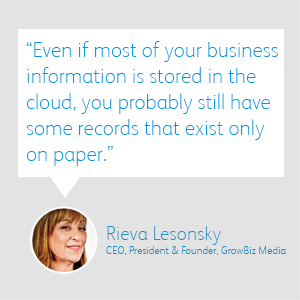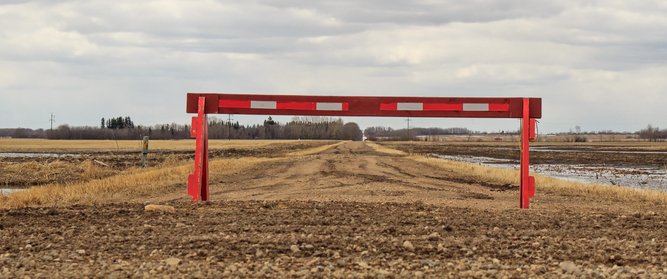 Note: This article was filed by a paid contributor to Xerox Corporation.
Note: This article was filed by a paid contributor to Xerox Corporation.
Whether it’s a fire at your location, a flood or a tornado, disasters can put your company out of business either temporarily or permanently. Between 40 and 60% of small businesses never reopen after a disaster strikes, according to the Federal Emergency Management Agency (FEMA).
In addition to creating a disaster plan to protect your employees, customers, equipment and location, it’s also important to have a “digital disaster plan” for how you’ll protect your business’s key information and systems. With the right digital disaster plan in place, disaster doesn’t have to cripple or even slow down your business operations. Follow these seven steps to develop an effective digital disaster plan.
- Pinpoint possible risks: Your business insurance agent can help you determine the most important risks to protect and insure against. For example, in some areas of the country, you may need to worry about earthquakes and wildfires; in others, tornadoes and floods are concerns.
- Assess how risks may impact your business: How would mission-critical business functions and information be affected if each of these disasters occurred? For instance, if floods prevented you and your employees from getting to your business, would you still be able to serve customers? What would happen if all your paper records were incinerated in a fire?
- Move your information to the cloud: Even if most of your business information is stored in the cloud, you probably still have some records that exist only on paper. Here are some documents you may want to digitize as part of your disaster preparation:
- Insurance documents
- Customer/vendor lists and contact information
- Financial/accounting data
- Contracts and orders
- Inventory records
- Corporate documents
- Contact information for employees
- Streamline the digitization process: Fortunately, digitizing print documents doesn’t have to take lots of time. A Xerox ConnectKey-enabled multifunction printers (MFPs) can be automated with preset digital workflows to route scanned documents into the appropriate folders, apps and cloud storage such as Microsoft 365 or Dropbox. All your employees have to do is push a few buttons, and their work is done. You can even create customized scan apps, such as scanning to email, FTP, shared network folders, USB or multiple destinations.
- Secure your cloud-based information: Once your data is in the cloud, no one should be able to access it unless they truly need to. When you scan or print documents with a Xerox MFP that offers password authorization, you can be confident only authorized users can access sensitive documents. You can even encrypt PDF files with passwords when you’re scanning them to email—very useful if you and your employees are emailing each other from your homes or other temporary work locations during disaster recovery.
- Prepare to work outside the office: Immediately following a disaster, you and your team may need to work at home, at rented workspace or other temporary location. No matter where you’re working, you’ll be able to print to a Xerox MFP with the Xerox® Mobile Link App. Plan ahead by having your employees set this up on their smartphones and tablets.
.
Also see if employees have the tools they need to work remotely, such as computers and mobile devices. Set up communication, collaboration and project management apps that allow you to work remotely, as well as conferencing tools you can use with customers or vendors outside the office. If you don’t use these tools as part of your normal business operations, do several dry runs to make sure everyone knows how to use them in an emergency.
- Create a communication plan: You’ll need to quickly communicate with employees when disaster strikes. For instance, if your office is flooded, you’ll want to tell workers not to try to come in. Create a contact list with multiple ways to contact all employees (email, phone, cell, etc.) that everyone can access. Also plan a “phone tree” for who will call whom. Print the list and have employees keep a copy at home as well.
Want more business tips from Rieva? Click here.
September is National Preparedness Month. FEMA offers disaster planning resources for small business on its website.
Share this article on Twitter!
Tweet: Does Your Business Have a Digital Disaster Plan? https://ctt.ec/adBeo+ via @XeroxOffice
Subscribe to the Small Business Solutions Blog and receive updates when we publish a new article. [wysija_form id=”1″]



